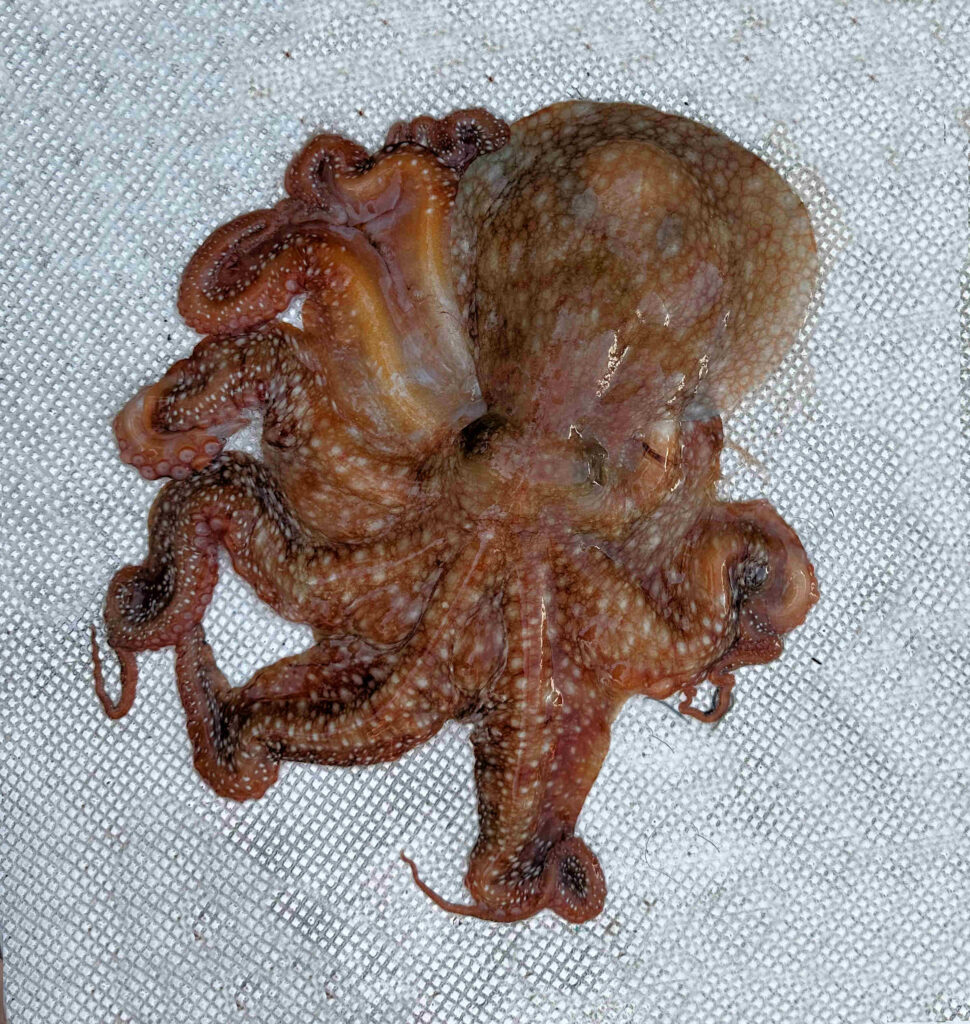Eastern Pacific Red Octopus, Octopus rubescens
 Eastern Pacific Red Octopus, Octopus rubescens. Octopus caught with hook and line from 300 foot water off the Gordo II bank, July 2023. Arm span: 36 cm (14 inches).
Eastern Pacific Red Octopus, Octopus rubescens. Octopus caught with hook and line from 300 foot water off the Gordo II bank, July 2023. Arm span: 36 cm (14 inches).
Phylogeny: The Eastern Pacific Red Octopus, Octopus rubescens, is member of the the Octopodidae Family of octopi. There are nine family members found within the Sea of Cortez.
Morphology: The Eastern Pacific Red Octopus is round or ovoid in profile, with a dull red to reddish-brown color often mottled with white. Like other octopi, they can change their color and texture, making their appearance highly variable. The arms are often three to four times the body length. The dorsal mantle is 5.0 cm (2.0 inches) to 10.0 cm (4.0 inches) in length. The adults weight between 100 grams (3.5 oz) and 150 grams (5.3 oz) but weights up to 400 grams (4 oz) have been recorded.
Habitat and Distribution: The Eastern Pacific Red Octopus is found along the entire West coast of North America, from Mexico to Alaska. They tend to remain in shallow water areas, including under rocks in intertidal zones and are found at depths up to 91 m (300 feet).
Diet: The Eastern Pacific Red Octopus consume clams, crabs, and scallops. They have the ability to inject venom to kill prey which helps them to separate the flesh from shell. They also utilize their sharp beak to pry open shells. They normally gather and collect their food and take it “home” to consume it. Piles of shells of their prey can be found near their “home.” Their planktonic larvae stage consumes krill.
Reproduction and Life Cycle: The Eastern Pacific Red Octopus mate in late winter and early spring, followed by spawning in intertidal areas. The female octopi protect and groom the larvae until they hatch at six to eight weeks. Their larvae are small, being approximately 3-4 millimeters across, and capsule-shaped with cord-like stalks. The males die after mating and the females die after their larvae hatch. Although the young can swim and forage for food immediately after hatching, their mortality rate is approximately 90%.
Behavior: When threatened, the Eastern Pacific Red Octopus can release a reddish-brown ink, or sepia, to distract or threaten its predator. They can also burrow into sand plains to hide itself.